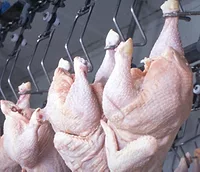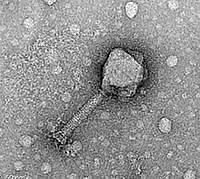USDA Researchers Seek to Reduce Allergenicity of Tree Nuts, Peanuts

Source: American Chemical Society (text); Clove Garden.com (photo)
For the millions of adults and children in the U.S. who have to shun nuts to avoid an allergic reaction, help could be on the way. Scientists are now developing a method to process cashews — and potentially other nuts — that could make them safer to eat for people who are allergic to them.
The researchers are presenting their work at the 248th National Meeting & Exposition of the American Chemical Society (ACS). The meeting, being held in San Francisco through Thursday, features nearly 12,000 presentations on a wide range of science topics.
“The only widely accepted practice for preventing an allergic reaction to nuts is strict avoidance — stay away from the food,” said Chris Mattison, a researcher with the Agricultural Research Service (ARS) branch of the U.S. Department of Agriculture (USDA). “Clinical trials to test immunotherapy are under way, but we’re approaching it from an agricultural perspective rather than medical. Can we change the food, instead of treating the person, so we can eliminate or reduce severe reactions?”
For those with food allergies, responses to offending products can range from mild itching in the mouth or skin to life-threatening anaphylaxis, which makes it hard to breathe. Once every three minutes, someone in the U.S. ends up in the emergency room due to a food allergy reaction — that adds up to about 200,000 visits a year.
To try to reduce those numbers, Mattison’s team is looking at ways to modify proteins in tree nuts and peanuts (which are legumes) that trigger an immune response in people who are allergic. The response is launched by antibodies called immunoglobulin E (IgE), which recognize and latch onto the proteins. Mattison explained that changing the shape of the proteins makes it harder for IgE to find them.
But past research taking this approach has involved harsh chemicals. Mattison wanted to see if his team could achieve the same results, but using compounds that are “generally regarded as safe,” or GRAS. These are substances that are accepted by the Food and Drug Administration for use in food and pharmaceuticals.
Looking for quick answers on food safety topics?
Try Ask FSM, our new smart AI search tool.
Ask FSM →
“We found that the GRAS compound sodium sulfite can effectively disrupt the structure of a couple of the cashew allergens,” Mattison said. “And we’ve done a couple of different tests to show we reduced IgE binding to the proteins when they’ve been treated with sodium sulfite.”
Next, they plan to conduct experiments on whole nuts and test the modified proteins on cells in the lab to see how they respond. They’re also looking at enzymes, which are molecules that can cut up proteins, as candidates to disrupt the allergens.
And, although this particular report focuses on cashew proteins, Mattison said the work could have broader implications. The kinds of allergenic proteins the GRAS compound and enzymes affect are not exclusive to one kind of nut.
“One of our goals is to apply our knowledge from the cashew experiments to other tree nuts and to peanuts,” he said.
Mattison acknowledged receiving funding from the USDA's Agricultural Research Service.








.webp?t=1721343192)